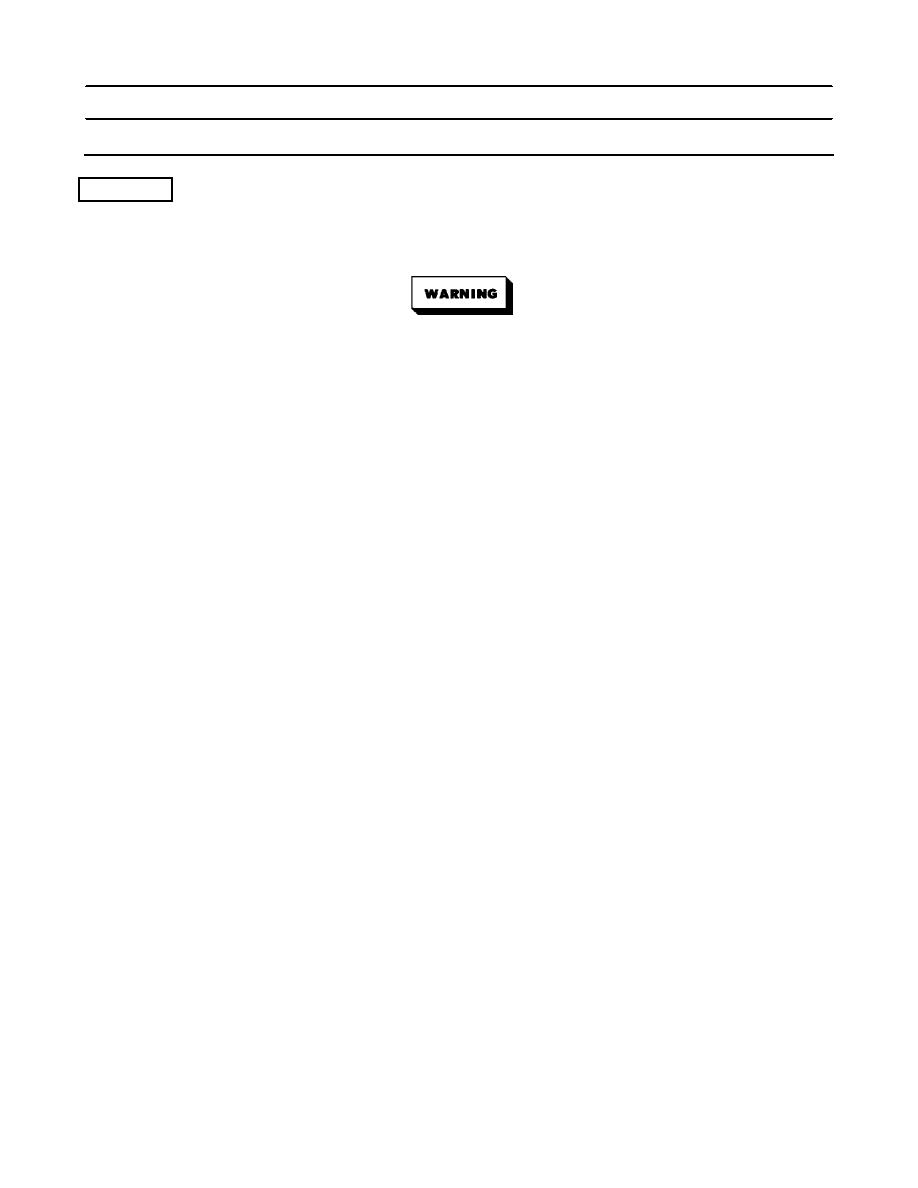
| Tweet |

Custom Search
|
|

|
||
 TM 55-1905-220-14-4
3-12. BLOWER - MAINTENANCE INSTRUCTIONS (Cont).
LOCATION
ITEM
ACTION
REMARKS
Inspection
The blower may be inspected for any of the following conditions without being removed from the
engine. However, the air silencer and adaptor, or the air inlet housing, air shutdown housing and adaptor must
first be removed.
When inspecting a blower on an engine with the engine running, keep fingers and
clothing away from moving parts and run the engine at low speeds only.
a.
Dirt or chips, drawn thru the blower, will make deep scratches in the rotors and housing, and throw up
burrs around such abrasions. If burrs cause interference between the rotors andhte housing, replace
the blower(s).
b.
Leaky oil seals are usually manifest by the presence of oil on the blower rotors or inside surfaces of the
housing. This condition may be checked by running the engine at low speed and directing a light into
the rotor compartment at the end plates and the oil seals. A thin film of oil radiating away from the
seals toward the inlet of the blower is indicative of leaking seals.
c.
A worn blower drive, resulting in a rattling noise inside the blower, may bedetected by grasping the
right-hand helix rotor firmly and attempting to rotate it. The rotors may move from 0.3750 inch (0.9525
cm) to 0.625 inch (1.588 cm), measured at the lobe crown, with a springing action. When released, the
rotors should move back at least 0.250 inch (0.635 cm). If the rotors cannot be moved as directed
above, or if the rotors move too freely, the flexible blower drive coupling should be inspected and
replaced if necessary. The drive coupling is attached to the right-ha d helix blower timing gear.
n
d.
Loose rotor shafts or damaged bearings will cause rubbing and scoring between the crowns of the rotor
lobes and the mating rotor roots, between the rotors and the end plates, or between the rotors and the
housing. Generally, a combination of these conditions exists. Worn or damaged bearings will cause
rubbing between mating rotor lobes at some point or perhaps allow the rotor assemblies to rub the
blower housing or the end plates. This condition will usually sho up at the end where the bearings
w
have failed. Replace the blower(s).
3-465
|
||
 |
||